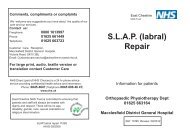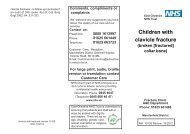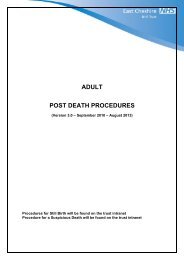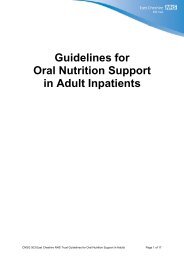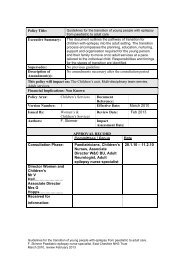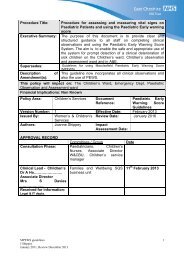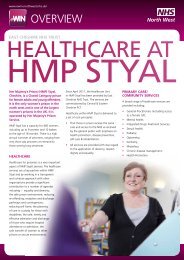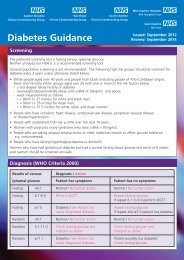Do Not Attempt Cardiopulmonary Resuscitation 1669.pdf
Do Not Attempt Cardiopulmonary Resuscitation 1669.pdf
Do Not Attempt Cardiopulmonary Resuscitation 1669.pdf
- No tags were found...
Create successful ePaper yourself
Turn your PDF publications into a flip-book with our unique Google optimized e-Paper software.
Appendix 2Equality Analysis(Impact assessment)What is being assessed? Name of the policy, procedure, proposal, strategy or service:<strong>Do</strong> <strong>Not</strong> <strong>Attempt</strong> <strong>Cardiopulmonary</strong> <strong>Resuscitation</strong> (DNACPR) PolicyDetails of person responsible for completing the assessment: Name: Jackie Cornes Job title: <strong>Resuscitation</strong> Officer Team: Professional Practice TeamState main purpose or aim of the policy, procedure, proposal, strategy or service:(usually the first paragraph of what you are writing. Also include details of legislation,guidance, regulations etc which have shaped or informed the document)<strong>Cardiopulmonary</strong> resuscitation (CPR) may be attempted on any individual for whom cardiac or respiratoryfunction ceases. Such events are inevitable as part of dying. CPR can theoretically be used on everyindividual prior to death. However, in some people this would be inappropriate, futile or against theindividual’s wishes. It is therefore essential to distinguish those patients for whom CPR would beinappropriate. The factors surrounding a decision whether or not to initiate CPR involve complex clinicalconsiderations and emotional issues. The decision for CPR of one patient may be inappropriate in asuperficially similar case. In conjunction with the General Medical Council (GMC) a joint statement by theBritish Medical Association (BMA), the Royal College of Nursing and the <strong>Resuscitation</strong> Council (UK) wasissued in October 2007. Recommended standards for recording DNAR (<strong>Do</strong> <strong>Not</strong> <strong>Attempt</strong> <strong>Resuscitation</strong>)decisions were issued in 2009 by the <strong>Resuscitation</strong> Council. The GMC also published guidelines –Treatment and care towards the end of life: good practice in decision making – in July 2010.The aforementioned guidelines have been used to prepare this policy.2. CONSIDERATION OF DATA AND RESEARCHTo carry out the equality analysis you will need to consider information about the people whouse the service and the staff that provide it.2.1 Give details of RELEVANT information available that gives you an understanding ofwho will be affected by this documentThis policy will support and inform the practice of all East Cheshire NHS Trust staff who are caring forpatients with a DNACPR decision.NoNo2.2 Evidence of complaints on grounds of discrimination: (Are there any complaints eitherfrom patients or staff (grievance) relating to the policy, procedure, proposal, strategy orservice or its effects on different groups?)2.3 <strong>Do</strong>es the information gathered from 2.1 – 2.3 indicate any negative impact as a resultof this document?3. ASSESSMENT OF IMPACTNow that you have looked at the purpose, etc. of the policy, procedure, proposal, strategy orservice (part 1) and looked at the data and research you have (part 2), this section asks you toassess the impact of the policy, procedure, proposal, strategy or service on each of thestrands listed below.<strong>Do</strong> <strong>Not</strong> <strong>Attempt</strong> <strong>Cardiopulmonary</strong> <strong>Resuscitation</strong> Policy<strong>Resuscitation</strong> OfficerVersion 5.0 May 1214





